UPSC Daily Current Affairs- 8th January 2024 | Current Affairs & Hindu Analysis: Daily, Weekly & Monthly PDF Download
GS-I
Why is Child Marriage still high in West Bengal?
Subject: Social Issues

Why in News?
A Lancet study highlights the ongoing challenge of child marriage in India, with significant prevalence in states like West Bengal.
- Focus on Four States: Bihar, West Bengal, Uttar Pradesh, and Maharashtra are noted for their high rates of child marriages, particularly among girls.
Key Findings of the Lancet Study
- Widespread Prevalence: The study reveals that one in five girls in India is married below the legal age, with notable disparities across states.
- Rising Numbers in West Bengal: West Bengal has seen a significant increase in child marriages, with over 500,000 more girls married as children.
Impact of Child Marriage
- Human Rights Violation: Child marriage is recognized as a form of sexual and gender-based violence and a violation of human rights.
- Health Consequences: The practice has detrimental effects on maternal and child health, as evidenced by incidents like infant deaths in Murshidabad.
Policy Interventions in West Bengal
- Kanyashree Prakalpa Scheme: A conditional cash transfer scheme aimed at encouraging education and discouraging child marriage among teenage girls.
- Rupashree Prakalpa: A cash incentive scheme for the marriage of girls, which sometimes counteracts the objectives of Kanyashree.
Challenges in Combating Child Marriage
- Educational Strides vs. Child Marriage: Increased school enrollment of girls in West Bengal has not translated into a reduction in child marriage rates.
- Literacy and Child Marriage Correlation: High literacy rates in certain districts have not led to a decrease in child marriage, indicating complex underlying factors.
- Migration and Social Norms: Migration patterns and social norms contribute to the persistence of child marriage, with families marrying off daughters before migrating for work.
Implementation of Laws and Regulations
- Inadequate Law Enforcement: Despite existing laws like The Prohibition of Child Marriage Act (PCMA), 2006, enforcement remains weak in West Bengal compared to other states.
- Proposed Amendments: Efforts to raise the legal age of marriage for women to 21 years are underway, with the bill referred to a Parliamentary Standing Committee.
Looking Ahead: Strategies for Change
- Need for Comprehensive Approach: Addressing child marriage requires a multi-faceted approach involving panchayats, schools, local communities, and political will.
- District Action Plans: The West Bengal government’s call for district action plans is a step forward, but effective implementation and social campaigns are crucial.
- Enforcing Laws and Raising Awareness: Strengthening law enforcement and raising public awareness are key to reducing child marriage rates in West Bengal and across India.
Conclusion
- Persistent Challenge: Despite policy efforts, child marriage remains a significant issue in India, particularly in states like West Bengal.
- Balancing Incentives and Enforcement: While schemes like Kanyashree and Rupashree aim to address the issue, balancing incentives with strict law enforcement is essential.
- Collaborative Efforts for Change: A collaborative effort involving all stakeholders, along with a strong political commitment, is necessary to effectively combat child marriage and protect the rights of young girls.
Source: The Hindu
GS-II
Social Media row between India and Maldives over Tourism
Subject: International Relations
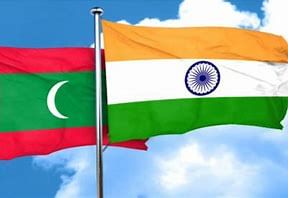
Why in News?
PM Modi’s social media posts promoting tourism in Lakshadweep led to a contentious exchange between Maldivian politicians, government officials, and Indian social media users.
- The posts highlighted Lakshadweep’s beauty but did not mention the Maldives or other island nations.
- Maldivian Reaction: Following PM Modi’s posts, some Maldivian social media users, including government officials, responded with offensive and derogatory comments targeting Indians and the Prime Minister.
Escalation of the Issue
- Sensational Headlines: Local Maldivian news websites sensationalized the issue, falsely claiming that India was campaigning against Maldivian tourism.
- Government Officials’ Involvement: High-ranking Maldivian officials engaged in the social media dispute, exacerbating the situation.
Maldivian Social Media Campaign
- #VisitMaldives Hashtag: In response to India’s promotion of Lakshadweep, Maldivian officials and supporters pushed the ‘#VisitMaldives’ hashtag, featuring local resorts and beaches.
- Territorial Claims: Some Maldivian users falsely claimed that Lakshadweep is not Indian territory but belongs to the Maldives.
Accusations Against India
- Alleged Competition: Maldivian social media users accused India of trying to compete with the Maldives as a tropical vacation destination.
- Racist Remarks: The posts led to a range of racist comments against Indians and Indian tourists.
Maldives’ Dependency on Tourism
- Significant Indian Tourist Numbers: Indians form a large group of tourists visiting the Maldives, with over 200,000 travelers in 2023.
- Economic Impact: Tourism is crucial for the Maldives, accounting for over 28% of its GDP.
Indian Response
- Boycott Calls: Some Indian users called for a boycott of Maldivian hotels and resorts.
- Highlighting Bilateral Cooperation: Others emphasized India’s assistance to the Maldives and aspects of bilateral cooperation.
- Celebrity Support: Bollywood celebrities and Indian sportspersons initiated a ‘Visit Lakshadweep’ campaign in response to the controversy.
Roots of Anti-India Sentiments
- Historical Campaign: Anti-India sentiments have been present since the ‘India Out’ campaign, which started in 2020 and was promoted by former president Abdulla Yameen Abdul Gayyoom.
- Muizzu Government’s Stance: The current Maldivian government, under President Mohamed Muizzu, has been fulfilling campaign promises, including withdrawing Indian military personnel from the Maldives.
Criticism Within the Maldives
- Opposition’s Stance: Not all in the Maldives support the government’s stance, with some politicians and diplomats criticizing the derogatory comments.
- Lack of Diplomatic Experience: Critics argue that some government officials lack experience and understanding of diplomacy.
Maldivian Government’s Reaction
- Official Statement: The Maldives’ Ministry of Foreign Affairs issued a statement distancing the government from the derogatory remarks.
- Cyber Attack Suspicions: Following the incident, several Maldivian government websites, including the foreign ministry, were suspected to be under cyber-attack.
Conclusion
- Surprise and Disappointment: The incident has surprised many in India and the Maldives, given the history of diplomatic support and cooperation.
- Unlikely to Affect Relations: Analysts believe the conduct of a few individuals is unlikely to impact broader India-Maldives bilateral relations.
- Need for Diplomatic Sensitivity: The episode underscores the importance of maintaining respectful and diplomatic communication between neighboring countries.
Source: The Hindu
Geographical Indication (GI) Tag
Subject: Government Schemes
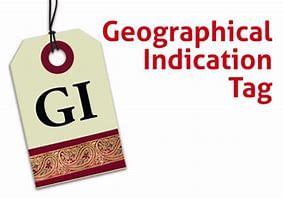
Why in News?
Seven products from Odisha, ranging from the Similipal Kai chutney made with red weaver ants to the embroidered Kapdaganda shawl, have bagged the coveted Geographical Indication (GI) tag.
About Geographical Indication (GI) Tag:
- It is a sign used on products that have a specific geographical origin and possess qualities or a reputation that are due to that origin.
- This is typically used for agricultural products, foodstuffs, wine and spirit drinks, handicrafts and industrial products.
- The Geographical Indications of Goods (Registration and Protection) Act, 1999 seeks to provide for the registration and better protection of geographical indications relating to goods in India.
- This GI tag is valid for 10 years following which it can be renewed.
Key facts about newly GI Tagged products
- Kapdaganda Shawl
- It is woven and embroidered by the women of the Dongria Kondh tribe, a particularly vulnerable tribal group (PVTG) in the Niyamgiri hills in Odisha’s Rayagada and Kalahandi districts.
- The shawl reflects the rich tribal heritage of the Dongria Kondhs.
- The shawl is worn by both men and women and the Dongrias give it to their family members as a token of love and affection.
- Lanjia Saurpa Painting
- It is one of the oldest tribal art forms, is also known as Idital.
- The artworks are famous for their beauty, aesthetics, ritualistic association and iconography.
- It belongs to the Lanjia Saura community, a PVTG largely residing in the Rayagada district. These paintings are in the form of exterior murals painted on the mud walls of homes.
- Koraput Kala Jeera Rice
- The black-coloured rice variety, also known as the ‘Prince of Rice’, is famous for its aroma, taste, texture and nutritional value.
- As the rice grains resemble cumin seeds, it is also called Kala Jeera.
- Its consumption helps in increasing haemoglobin levels and improves metabolism in the body.
- Nayagarh Kanteimundi Brinjal
- It is known for its prickly thorns on the stems and the whole plant.
- The green and round fruits contain more seeds as compared to other genotypes.
- It is famous for its unique taste and relatively short quick cooking time.
- The plants are resistant to major insects and can be grown with minimal pesticide.
- Odisha Khajuri Guda (Jaggery)
- It is a natural sweetener extracted from date palm trees and has its origin in the Gajapati district.
- Traditionally, the jaggery is prepared in a trapezoidal form called ‘Patali Gur’ and is organic by nature. It is dark brown and has a unique taste.
- Dhenkanal Magji
- It is a type of sweet made from cheese from buffalo milk, with distinct characteristics in terms of appearance, taste, flavour, shape, and size.
Source: Indian Express
GS-III
Diminishing Dietary Diversity amidst Biodiversity Emphasis
Subject: Environment and Ecology
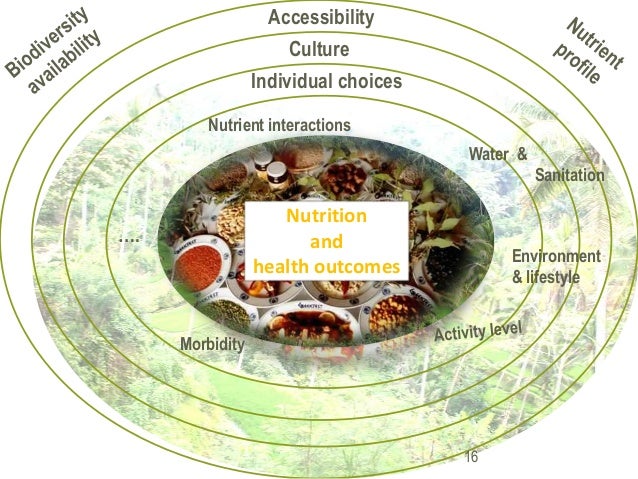
Why in News?
Despite the global emphasis on biodiversity, the world’s diet has become increasingly homogenous, with staples like rice, wheat, maize, and sugar constituting over half of the global calorie intake.
- Supermarkets mirror this trend, offering a limited selection of vegetables, reflecting a decline in “dietary diversity.”
Dietary Diversity and Issues
- Nutritional Quality: A diverse diet, encompassing various food groups, enhances nutrition. However, the prevalence of monoculture (growing a single crop extensively) diminishes “agricultural biodiversity.”
- Environmental Cost: Importing diverse food groups from distant regions is expensive and environmentally taxing.
Contributors to Nutritional Variety in India
- Small-Scale Farming and Agroforestry: Smallholder farmers, shepherds, and tribal communities practicing agroforestry significantly contribute to India’s nutritional diversity.
- Regional Varieties: India boasts a wide array of local vegetables and crops, varying regionally, provided by these small-scale cultivators.
Examples of Nutrient-Rich Local Varieties
- South India: Leafy greens like Green Amaranth (Tamil, kuppi keerai; Hindi, junglee chaulayi) and Leucas (Tamil, thumbai; Sanskrit, Drona pushpi), rich in iron and calcium; starchy tubers like East Indian arrowroot (Tamil, kuva or ararut-kizhargu; Hindi, tikhur), beneficial for digestion.
- Central India: Edible flowers and oil-rich seeds from the Madhuca or Indian butter tree (Tamil, illupai; Hindi, mahua); Khejri pods (Tamil, parambai) used in local cuisine and combating desertification.
- Northeast India: Indigenous Jhum cultivation, growing diverse crops on the same land, offering dietary variety but declining in practice.
Jhum Cultivation: A Diverse Agricultural Practice
- Contrast to Modern Agriculture: Jhum cultivation, practiced in Northeast India, involves growing multiple food crops together, offering dietary diversity but losing popularity.
- Decline in Practice: Research indicates a significant reduction in Jhum cultivation areas, with a shift towards monoculture crops like areca nut, black pepper, and rubber.
Consumer Influence and Choices
- Role of Consumer Preferences: Consumer tastes significantly impact the availability and cultivation of diverse, wild food varieties.
- Encouraging Diversity: Incorporating lesser-known fruits like wood apples (velam pazham) and Jamuns (nagai) into diets can enhance nutritional quality and support small growers.
Conclusion
- Need for Awareness: Recognizing the importance of dietary diversity is crucial for nutrition, environmental sustainability, and supporting small-scale agriculture.
- Promoting Local Varieties: Embracing local, diverse food options can enrich diets and contribute to preserving agricultural biodiversity, aligning with global efforts to emphasize biodiversity.
Source: Indian Express
Red Sea Crisis: Impact on Global and Indian Trade
Subject: Economy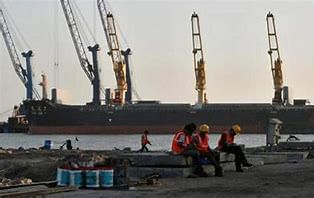
Why in News?
Since November, attacks by the Houthi militia of Yemen have rendered the Red Sea, a crucial marine route via the Suez Canal, unsafe for cargo ships.
- Alternative Route: This has led to a significant rerouting of cargo, with ships now taking the longer Cape of Good Hope route, affecting global trade and increasing costs.
About Red Sea
| Details | |
| Location |
|
| Connection |
|
| Length |
|
| Width |
|
| Maximum Depth |
|
| Unique Features |
|
| Climate |
|
| Economic Importance |
|
Impact on Indian Trade
- Shift in Shipping Routes: Following the attacks, about 90% of India’s western hemisphere cargo is being rerouted through the Cape of Good Hope.
- Contractual Implications: The impact varies based on the type of buyer-seller contract, with some consignments being held up due to increased freight costs.
- Freight Cost Surge: Freight costs have risen significantly, by up to six-fold in some cases, affecting all consignments, especially low-value, high-volume cargo and perishables.
Implications for India’s Imports
- Increased Import Costs: The longer transit time and crisis could lead to costlier imports and necessitate better inventory management.
- Effect on Fuel Prices: The crisis might impact plans to reduce fuel prices in India, given the country’s high dependence on crude oil and petroleum product imports.
- Tanker Market Dynamics: Despite increased freight rates for affected routes, there hasn’t been a widespread rerouting of tankers.
Global and Indian Response
- UN and US Stance: The UN condemned the Houthi attacks, and the US is seeking more support for ‘Operation Prosperity Guardian’ to ensure safe sea lanes.
- India’s Monitoring: The Indian government is closely observing the situation, with the Commerce Secretary discussing potential impacts with officials and trade bodies.
Sector-Specific Impact
- Commodities Most Affected: Sectors like chemicals, plastics, and petrochemicals are severely impacted due to their inability to absorb freight hikes.
- Alternatives for High-Value Goods: For high-value, low-volume commodities, airlifting is an option, but most affected goods are large in volume.
Conclusion
- Continued Uncertainty: The situation in the Red Sea presents ongoing challenges for global and Indian trade, with no immediate resolution in sight.
- Adaptation and Monitoring: Businesses and governments are adapting to these changes, with a focus on monitoring developments and mitigating impacts.
- Long-Term Implications: The crisis underscores the vulnerability of global trade routes to geopolitical conflicts and the need for diversified shipping strategies.
Source: The Hindu
First Advance Estimates of India’s GDP: What are They and What do the Data Show
Subject: Economics
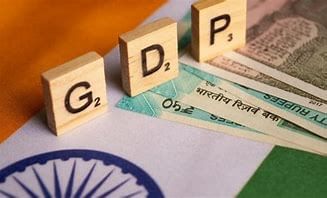
Why in News?
According to the First Advance Estimates (FAEs) released by the Government of India, India’s GDP will grow by 7.3% in the current financial year (2023-24), slightly faster than the 7.2% growth in 2022-23.
What is the Gross Domestic Product (GDP) Estimates?
- The FAE is presented at the end of the first week of January every year and are only the first estimates of growth for that financial year.
- By the end of February, the Ministry of Statistics and Programme Implementation (MoSPI) will release the Second Advance Estimates and, by the end of May, the Provisional Estimates.
- The GDP estimates continue to be revised as more and better data become available and in the coming 3 years, MoSPI will release the 1st, 2nd and 3rd Revised Estimates of this year’s GDP before settling on the “Actuals”/ final number.
What are the FAEs and their Significance?
- The FAE are based on the performance of the economy over the first 7-odd months, and the data are extrapolated to arrive at an annual picture.
- This means that the estimates available for the previous year (2022-23) are extrapolated using the relevant indicators reflecting the performance of sectors.
- The crucial significance of the FAEs is that they are the last GDP data released before the Union Budget for the coming financial year (which is presented on February 1) is finalised.
- As such, the FAEs constitute the base for the Budget numbers.
- However, since Lok Sabha elections will be held in April-May (2024), a full-fledged Union Budget will not be presented this year.
- This year’s FAEs draw some additional significance from the fact that they provide the first complete picture of economic growth in the 10 years of the present government.
What does the FAE Data Show?
- The chart shows India’s real GDP (GDP after excluding the effect of inflation), both in absolute terms (in Rs lakh crore) and in terms of growth rate.
- By the end of March 2024, India’s GDP is expected to rise to almost Rs 172 lakh crore as compared to Rs 98 lakh crore in 2014 and Rs 140 lakh crore in 2019.
- On an annual basis, the 7.3% growth rate estimated for 2023-24 presents a substantial and pleasant upside surprise.
- During 2014-15 to 2018-19, the Indian economy grew at a compounded annual growth rate (CAGR) of 7.4%; and during 2019-20 to 2023-24, it was just 4.1%.
- The big reason for this is that the economy grew by less than 4% in 2019-20 (before the Covid-19 pandemic), and then contracted by 5.6% in 2020-21 (immediately after Covid struck).
How India’s GDP Growth is Calculated?
- India’s GDP is calculated by adding up all kinds of spending in the economy - the demand side of the economy.
- As such, there are four main “engines” of GDP growth.
- Spending by people in their individual capacity/ Private Final Consumption Expenditure (PFCE). It accounts for almost 60% of India’s GDP.
- Spending towards investments in boosting the productive capacity of the economy/ Gross Fixed Capital Formation (GFCF). It accounts for 30% of the GDP.
- Spending by governments to meet daily expenditures such as salaries/ Government Final Consumption Expenditure (GFCE). It is the smallest engine, accounting for around 10% of GDP.
- Net exports: Since India typically imports more than it exports, this engine drags down GDP calculations, and shows up with a minus sign.
What is Contributing/Dragging India’s Current GDP Growth?
- PFCE: In the current year, the overall demand by people is expected to grow by 4.4%. This is similar to the CAGR (4.5%) in the 2nd term of the present government but is substantially lower than the growth rate in the 1st term (7.1%).
- Muted private consumption is made worse by growing inequality (consumption among the urban rich has grown quite fast while rural India hasn't yet recovered enough.
- While people should not consume more than their income, the muted performance of the biggest engine of growth is a matter of concern.
- GFCF: Investments have grown by 9.3% in the current financial year, thus helping to push up the CAGR in the second term (5.6%) closer to the CAGR in the first (7.3%).
- However, there are two lingering concerns: one, a large part of the investment spending is still coming from the government and, two, private consumption is still muted.
- GFCE: As weak as the growth in private demand has been in the current year, at 3.9%, government spending has grown even slower.
- Net exports: When data for any particular year shows up with a negative sign, it suggests Indians are importing more than they are exporting.
- With global growth remaining weak, the external sector remains a major drag on India’s growth, with net exports contributing negatively to real GDP growth (at -3 percentage points).
Source: The Hindu
Trichoderma
Subject: Science and Technology
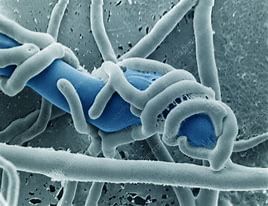
Why in News?
The Indian Institute of Spices Research (IISR) Kozhikode has successfully developed a new granular lime-based Trichoderma formulation.
About Trichoderma:
- The formulation named ‘Tricholime’, integrates Trichoderma and lime into a single product, making the application easier for farmers.
- Trichoderma is a fungal biocontrol agent, has proven effective in suppressing several soil-borne plant pathogens and serves as a successful bio-pesticide and bio-fertilizer in crop production.
- Recognizing the importance of Trichoderma and the challenges posed by traditional lime applications, the scientists at IISR developed ‘Tricholime’ to integrate lime and Trichoderma.
Significance of Tricholime
- It can successfully eliminate the need for a time-consuming two-step process.
- This lime-based formulation neutralises the soil acidity while promoting plant growth and shields crops from soil-borne pathogens, all in a single application.
- This formulation also benefits the crop by improving the physical condition of the soil, enhancing secondary nutrient availability and by boosting soil microbial activity, he added.
- IISR hopes that the technology behind this product can also be extended to include other beneficial bio-agents, opening new possibilities in product development to support sustainable organic farming.
Source: The Hindu
|
63 videos|5408 docs|1146 tests
|
FAQs on UPSC Daily Current Affairs- 8th January 2024 - Current Affairs & Hindu Analysis: Daily, Weekly & Monthly
| 1. Why is child marriage still high in West Bengal? |  |
| 2. What is the social media row between India and Maldives over tourism? |  |
| 3. What is a Geographical Indication (GI) tag? |  |
| 4. How does diminishing dietary diversity affect biodiversity emphasis? |  |
| 5. What is the impact of the Red Sea crisis on global and Indian trade? |  |
















